Top Searches
- News
- India News
- Explained: What is liquid oxygen? When is it used for Covid treatment?
Explained: What is liquid oxygen? When is it used for Covid treatment?
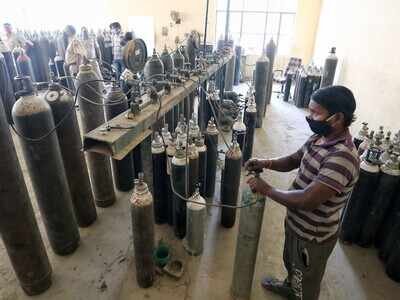
NEW DELHI: The massive second wave of the Covid-19 pandemic barrelled past another grim milestone as India reported nearly 4.12 lakh new cases on Thursday even as demand for medical oxygen jumped sevenfold.
Hospitals in several states are reeling under a shortage of medical oxygen and beds amid an unprecedented rise in Covid-19 cases.
Most hospitals are not equipped with independent plants that generate oxygen directly for patients. As a result, hospitals typically rely on liquid oxygen, which can be stored in cylinders and transported in tankers. But amid the surge, supplies in hard-hit places including New Delhi are running critically short.
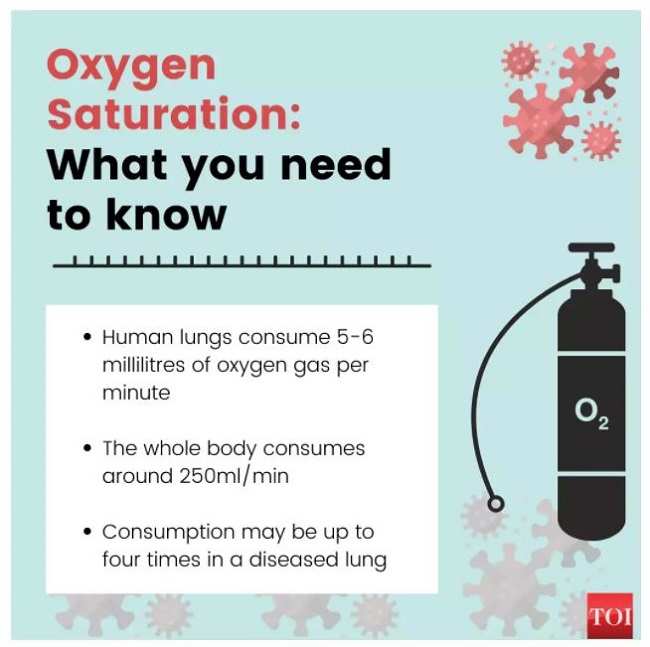
What is liquid oxygen and why is it in such great demand?
Liquid oxygen is crucial for the treatment of severe Covid-19 patients since the disease affects lung functioning. Shortness of breath or difficulty of breathing is one of the most common symptoms in patients with severe Covid-19. It also hampers the supply of oxygen to various parts of the body. They hence need oxygen therapy, to be supplied through medical oxygen.
One of the ways how this oxygen can be supplied is through Liquid Medical Oxygen (LMO). It is high purity oxygen used for medical treatment and is developed for use in the human body.
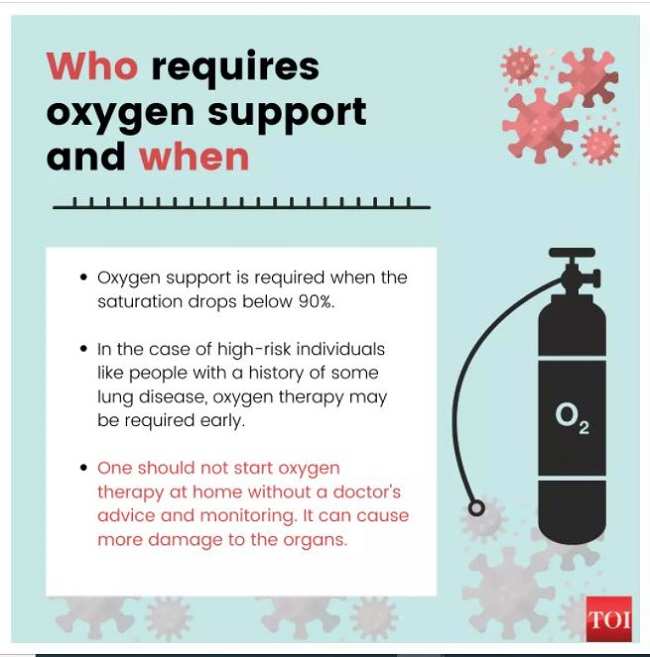
Why in the liquid state?
Due to its low melting and boiling points, oxygen is in a gaseous state at room temperature. Liquification enables storage in larger volumes and easier transportation.
How is liquid medical oxygen produced?
The most common production method is the separation of oxygen in what are known as Air Separation Units or ASUs. They are plants that separate large volumes of gases. They use a method called Fractional Distillation Method to produce pure oxygen from atmospheric air.
In this method, gases from the air are separated into various components after cooling them into a liquid state and then liquid oxygen is extracted from it. The resultant mixture of Oxygen and Argon is drained, decompressed, and passed through a second low-pressure distillation vessel for further purification.
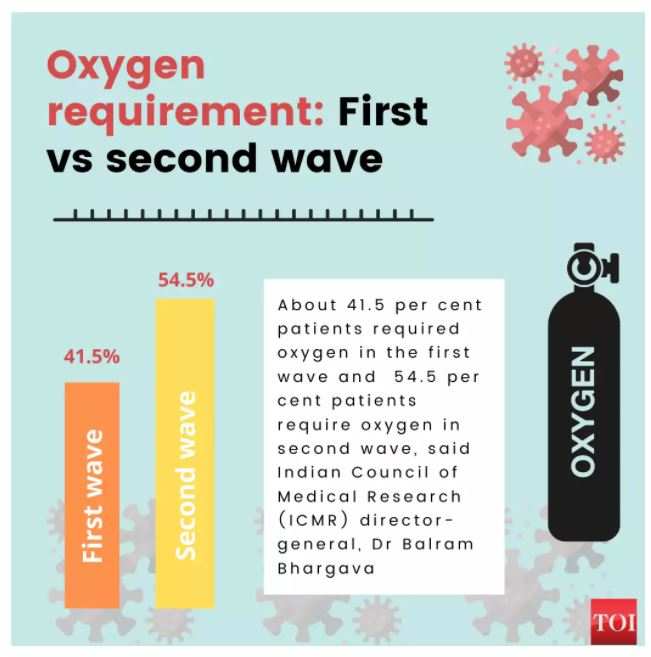
Which then gives purified liquid oxygen as the final output, which is then transported using cryogenic containers. Cryogenic liquid containers are specially designed for safe and economic transportation and storage of liquefied gases at cryogenic temperatures, lower than –90°C. These containers are highly insulated, in which liquid gases are stored at very low temperatures.
When does a Covid-19 patient need liquid oxygen?
Patients whose oxygen saturation drops below 90% require oxygen support but the warning signs have to be looked out for. There is a simple test called the walk test. Covid patients should be made to walk for six minutes. Their oxygen levels before starting the walk and after finishing it should be measured. If they become too breathless or have to lie down and cannot finish their six-minute walks, that is a sign that they need to be hospitalised and may need oxygen.
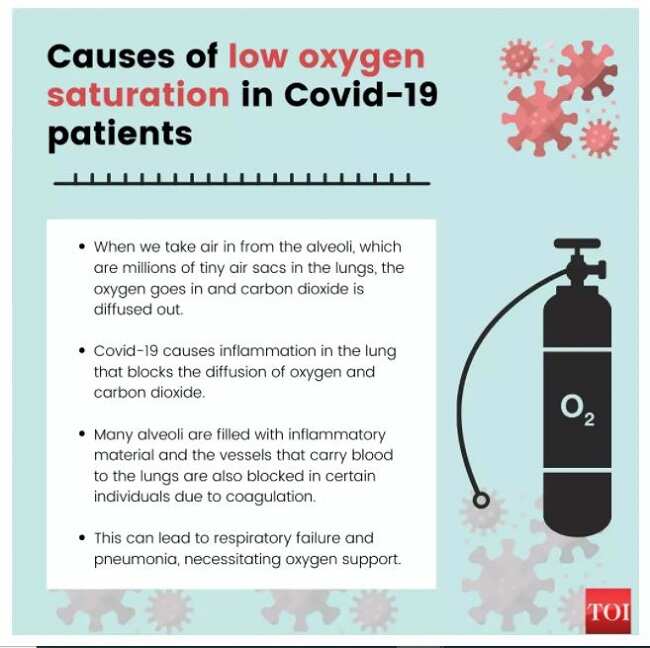
If the oxygen level drops by more than three percentage points say from 96% to 93% due to that six-minute walk, it's a warning sign that the effect on the lungs is significant enough to probably worsen.
What is the government doing to increase the production of liquid oxygen?
The Centre has increased medical oxygen supply by over 20% while seeking to set up 551 dedicated medical oxygen generation plants at public health facilities across district headquarters, using funds from PM-Cares.
Industries have been ordered to restrict the use of liquid oxygen, including existing stock, and divert it for medical purposes. This is expected to add around 1,500 tonnes to the daily supply.
India is also receiving oxygen from countries across the world in the form of oxygen cylinders, concentrators.
Hospitals in several states are reeling under a shortage of medical oxygen and beds amid an unprecedented rise in Covid-19 cases.
Most hospitals are not equipped with independent plants that generate oxygen directly for patients. As a result, hospitals typically rely on liquid oxygen, which can be stored in cylinders and transported in tankers. But amid the surge, supplies in hard-hit places including New Delhi are running critically short.

What is liquid oxygen and why is it in such great demand?
Liquid oxygen is crucial for the treatment of severe Covid-19 patients since the disease affects lung functioning. Shortness of breath or difficulty of breathing is one of the most common symptoms in patients with severe Covid-19. It also hampers the supply of oxygen to various parts of the body. They hence need oxygen therapy, to be supplied through medical oxygen.
One of the ways how this oxygen can be supplied is through Liquid Medical Oxygen (LMO). It is high purity oxygen used for medical treatment and is developed for use in the human body.

Why in the liquid state?
Due to its low melting and boiling points, oxygen is in a gaseous state at room temperature. Liquification enables storage in larger volumes and easier transportation.
How is liquid medical oxygen produced?
The most common production method is the separation of oxygen in what are known as Air Separation Units or ASUs. They are plants that separate large volumes of gases. They use a method called Fractional Distillation Method to produce pure oxygen from atmospheric air.
In this method, gases from the air are separated into various components after cooling them into a liquid state and then liquid oxygen is extracted from it. The resultant mixture of Oxygen and Argon is drained, decompressed, and passed through a second low-pressure distillation vessel for further purification.

Which then gives purified liquid oxygen as the final output, which is then transported using cryogenic containers. Cryogenic liquid containers are specially designed for safe and economic transportation and storage of liquefied gases at cryogenic temperatures, lower than –90°C. These containers are highly insulated, in which liquid gases are stored at very low temperatures.
When does a Covid-19 patient need liquid oxygen?
Patients whose oxygen saturation drops below 90% require oxygen support but the warning signs have to be looked out for. There is a simple test called the walk test. Covid patients should be made to walk for six minutes. Their oxygen levels before starting the walk and after finishing it should be measured. If they become too breathless or have to lie down and cannot finish their six-minute walks, that is a sign that they need to be hospitalised and may need oxygen.

If the oxygen level drops by more than three percentage points say from 96% to 93% due to that six-minute walk, it's a warning sign that the effect on the lungs is significant enough to probably worsen.
What is the government doing to increase the production of liquid oxygen?
The Centre has increased medical oxygen supply by over 20% while seeking to set up 551 dedicated medical oxygen generation plants at public health facilities across district headquarters, using funds from PM-Cares.
Industries have been ordered to restrict the use of liquid oxygen, including existing stock, and divert it for medical purposes. This is expected to add around 1,500 tonnes to the daily supply.
India is also receiving oxygen from countries across the world in the form of oxygen cylinders, concentrators.
FacebookTwitterLinkedinEMail
Start a Conversation
end of article
Trending Topics
Top Stories Right Now
- indiaIndia's struggle to track new Covid variants could worsen crisis
- indiaCovid live: Kerala govt issues guidelines ahead of lockdown starting May 8
- indiaOver 50% of world's new cases in a day: India's record Covid numbers in 5 charts
- cityLive: Delhi government caps private ambulance rates
- indiaCovid third wave warning: Govt's scientific advisor pitches for social distancin...
Quick Links
Coronavirus in MumbaiFarm bill 2020Farmers protestCoronavirus in DelhiCoronavirus in BangaloreCoronavirus symptomsCoronavirus in IndiaWest Bengal elections 2021Coronavirus NewsSolar EclipseNPRWhat is NRCCAB BillCAB and NRCAssam election 2021Podcast newsLok SabhaTamil Nadu Election 2021CongressBJP newsKerala Elections 2021Indian ArmyISRO newsSupreme Court